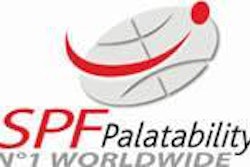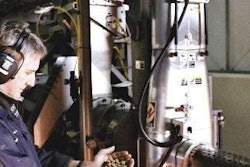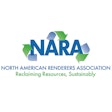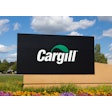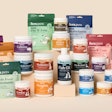In a nutshell, in the US, most of the new petfood products were and are in the premium segment. They often promise value-added benefits in terms of healthcare and nutritional value to justify higher prices. This trend continues to be a strong factor in motivating the overall growth of dog and cat food sales.
Numbers and examples
In 2004, US dog food retail sales were about US$8.9 billion; cat food retail sales were around US$4.5 billion. Industry estimates for new petfood products were 390 in 2003. Euromonitor cites many examples from their review period, 1998-2005 (Petfood and pet care products in USA 2005). They often promise health care benefits. There are products for:
Weight loss,
Dental care,
Urinary health,
Digestive health,
Coat and skin care,
Decreased fecal volume,
Decreased fecal odor,
Slowing aging,
Easing joint pain,
Altering moods,
Hairball control and
Making puppies more trainable.
The most prevalent type of value-added benefit was food formulated for weight or weight maintenance.
Dog food performance
New dog food products over the review period were focused mainly on the treats and premium foods sectors. For the most part, dog food was able to realize steady, if slow, value and volume gains over the review period. Declines and stagnant growth in the mid-priced segments were more than offset by gains in premium brands and dog treats.
Premium products continued to develop new market segmentation during the review period and garnered even greater consumer interest as a result. Life cycle feeds, large breed formulas and feeds for active and less active pets inspired consumers to shop even more selectively for the better health of their pets.
Dog treats saw the most new product launches in 2003 and 2004. Treats are increasingly being positioned to reproduce the experience of human foods, both in form (popcorn, lollipops, cookies and other dessert shapes) and in flavor (peanut butter, vegetables). Nestlé has even introduced an energy bar for dogs, with its Purina Pro Plan Performance Bar (May 2004). Another product gaining in popularity is flavored water for dogs, such as NutriVet LLC's K-9 Plus Nutrient Enhanced Water (May 2004) and K-9 Water Co Inc's K-9 Vita Water for Dogs (September 2003).
In addition to replicating the form and flavor of human food, dog treats are increasingly being introduced with functional health benefits, as an added incentive for dog owners to purchase them for their pets. The most prevalent benefit in recent months has been dental care, with several new products claiming to help reduce plaque and fight bad breath in dogs.
New dog treat leader
2003 saw a new brand leader in the dog treat category in value sales terms. S&M NuTec's Greenies are chewable dog treats formulated to eliminate odor-causing bacteria and reduce tartar build-up on teeth. The small Kansas City-based company saw enormous success with its Greenies line of treats in 2003, helped by national roll-outs to pet superstore chains like Petco and Petsmart during that year.
Cat food performance
Cat treats and premium cat foods were the only source of sales growth in 2004. Cat treats posted strong overall gains, but remain a relatively underdeveloped subsector, while wet and dry premium cat foods showed nearly equal sales increases in 2004.
Cat treats keep growing
Cat treats continue to grow at a faster rate than any other product in the sector. Cat treats are a relatively new concept, and have only recently begun to gain acceptance as a pampering item or a value-added item to supplement a cat's normal diet. Although cat treats sales continue to grow quickly, they accounted for just 4.7% of cat food value in 2004. Dog treats account for about 15% of dog food value.
Trading up to premium foods
Premium cat foods continued their strong growth during the review period. Much like premium dog foods, manufacturers have increasingly offered specifically-formulated premium cat foods designed for particular sizes and life cycle stages of cats. Formulas often deal with common cat health-related issues, such as hairball control or urinary tract health. As pet owners continue to regard their pets as part of the family, these health-oriented foods hold more appeal, despite their higher prices. Premium brands continue to be developed and marketed to fulfill this demand.
The migration of Iams into mass-market channels in 2001 continues to fuel growth in the premium brand's sales. Iams has shown some of the strongest gains in both the wet and dry categories, and has increased consumer access to premium foods.
Cat food value growth
Premium brands accounted for all of the value growth in wet and dry cat food in 2003, and the strongest gains were enjoyed by the largest of these brands. Hill's Science Diet led the way with a 7.7% increase in value sales, followed by Iams with a more modest 3.7%.
Many new foods also addressed specific dietary and health concerns of cats. Hill's Prescription Diet m/d Dry and Canned Cat Food (May 2004) is a low-carb, high-protein food formulated for weight maintenance. Friskies Special Diet for Adults Dry Cat Food (March 2004) has low magnesium and claims to reduce urinary pH levels. Hill's Science Diet Advanced Protection Cat Food (November 2003) has antioxidants and claims to slow the effects of aging in cats.
Cat treats were once again a popular area for new products. As manufacturers try to foster a habit of treating in cat owners, new products have promoted functionality and health benefits to complement a cat's diet. These often claim benefits such as increased digestibility or hairball care, and also promise to increase cat health through natural ingredients like milk or vegetables.
Pet people
The "humanization" of pets is a continuing trend, whereby pets (particularly dogs and cats) are increasingly cared for according to human patterns. They are often considered as equivalent to children in the level of attention and care they gain from pet owners. This has led to a heightened awareness of the special health needs associated with pets at different developmental stages, and an increased tendency to pamper pets with toys and treats that are not really needed from a care or nutritional standpoint.
Humanization has also led to some developments that further equate pets with their owners. These have included products such as foods with "human-grade" ingredients, treats fashioned to look and taste like human food, and an increased array of dessert products for dogs and cats (usually with beef or fish flavoring). The strong performance of higher-priced premium feeds represents a correlation with this trend, as pet owners have a stronger desire to provide what they consider to be the best possible food for their pets, as they would any other member of their family.

